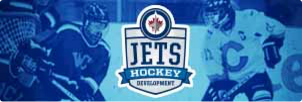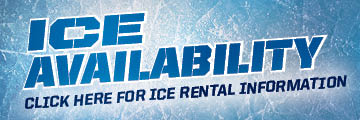Practice is a time when players should be coming to the rink to work and get better. This time for coaches can be used to work on individual needs of players, address issues that have come up from games and spend time with players to help build relationships. In order for players to be willing to make changes, they have to trust the coach and understand why they are doing specific things.
Effective practice planning for a coach can help create an environment where players want to come and develop. Here are some simple principles for coaches to help plan practices:
Decide on a topic that you want to address for that day
- For me as a skills coach, this is drastically different than for a team coach but the principle remains the same. Trying to do everything in one practice won’t help the players as they will end up just doing drills and not learning about the concepts behind them. For example, if in your last game your team struggled with offensive zone entries and you want to work on this, you can structure your practice around that concept. Your warm-up shooting drill can include shots from a wide entry (with speed). Your next drill can incorporate a net drive player. Your third drill can include a late player coming with a delay or a direct pass to a high player. The final drill can add the competition of a three-on-two so players can use the skills they worked on in the first three drills. As the season progresses, the drills can evolve to add different options that could happen in the game. By showing players options related to a topic in practice, you are helping them understand what could happen and giving them choices to make in the game. The goal is that players learn to make positive plays by recognizing the situation and making the right decision. If players make the right decision, give them a pat on the back or words of encouragement as soon as they get back to the bench. If they could have made a better decision, explain why there may have been a better choice. By identifying specifics in practice, you can help players progress through the season.
Be organized in your drill progressions
- By having a structure for practice, it will make things flow a lot better. A simple progression that works for teams would be to have players warm up with either skating or skills while the goalie has some dedicated time at the beginning of practice to warm up. This time for the goalie can be with a goalie coach or a coach as a shooter. The time required can change based on what is needed and what practice looks like. This is a good opportunity to give players a puck more often or work on something that doesn’t require a shot on goal (i.e., puck protection). This time split between players and goalie is best used as a lead into the topic for the day. Once you get through the warm-up, a simple progression I use is what I call 1-2-3. This simply means the warm-up drill has one player shooting (typically a simple shot from a wide lane); the next drill has two players (typically adding in a lateral pass or a mid-lane entry to a wide shot); and the next drill has three players (this is a simple progression to lead into a topic like offensive zone entries, whereas other topics would require a very different progression based on what is being worked on). The time before the shooting drills is structured in a way to maximize players touching the puck and minimize time standing in lines.
Think about your goalies in practice
- The most effective practice for your goalies is to allow them to see the different types of shots that they may face in a game and allow them the necessary reps to practice those scenarios. The most common frustration I hear from goalies is they see the same shot over and over again in practice. If your warm-up shooting drill includes a shot from the outside wide lane and the second drill includes a shot from the outside, the goalie is seeing the exact same shot for two drills. To make practice better for the goalies, try to provide different shots, or encourage them to move in different patterns for each drill. Here are some ways to challenge goalies in practice:
– Add lateral passes
– Add low to high passes (passes from corner to the point)
– Change distance of shots
– Add plays from below the goal line
– Add screens, tips, deflections, angle deflections
– Encourage players to play any rebounds
– Use multiple shots in a drill (I call these drills scrambles or flurries as they simulate a shift where goalies see three to four shots in a short period of time. Goalies come to practice to work as well. They will be tired after these drills so try to space them out so they are not back to back.)
Speak to players in practice in a constructive way
- Players at every age want to learn about the game and they want to get better. Spend time talking to players individually before, during, and after practice to help get to know them. Each player is going to be motivated in a different way and your job as a coach is to figure out how to get the most out of each player. As each player gets better individually, the overall level of your team goes up. If you see players doing something wrong in a drill you can talk to them while they are waiting for their next rep and explain what they can change. If you see multiple players making the same mistake, that would be a good time to stop the drill. Try explaining the drill (or concept) in a different way or simply demonstrate the “better” way to do it. Letting players do drills wrong in practice will lead to them doing that in a game and thinking it is okay. Good communication between coaches and players in practice will lead to more effective communication on the bench in games.
Use a variety of drills in practice
- If players come to practice and see the same four to six drills every single day, they will go into autopilot mode and just go through the motions. Players at any age want to be challenged and they will respond to something fresh or different. Every coach has favourite drills that they like to use for specific topics. However, if the same drills are used frequently, the options in the drills can change. This way, the structure looks the same but the drill is different from day-to-day. Using a variety of drills or changing options in drills will challenge players to think just like they do in games. This will encourage players to remain focused in practice just like they have to be in games. As a coach, you will see players who can adjust to options, and you will see players who have trouble with things like switching sides in drills. This may be an indicator to a coach that more time needs to be spent explaining concepts and “checking in” to ensure players understand.
The goal for coaches should be to help players develop from the start of the season to the end of the season. Players can develop both individually in their personal skill set, as well as develop as a team in the way they execute team systems. The best coaches can lead and encourage both of these to happen through effective practice planning and time management in practice. Through the Jets Hockey Development Program, we work with players and coaches to help develop the game of hockey, both provincially and through Hockey Canada on a national scale. Be sure to check bellmtsiceplex.ca to see what coaching seminars are added to our summer and winter schedules for 2019-20.






